|
Index...
|
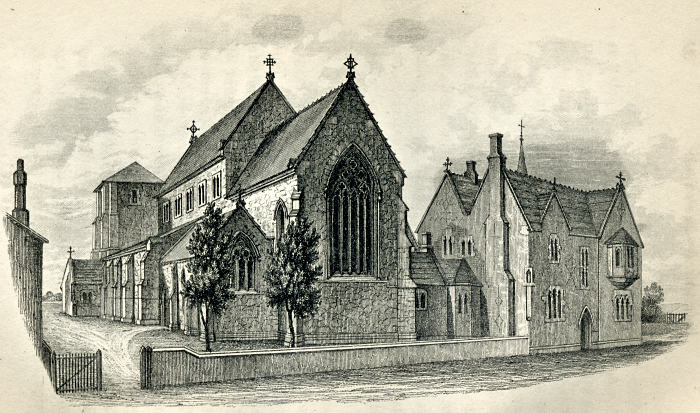
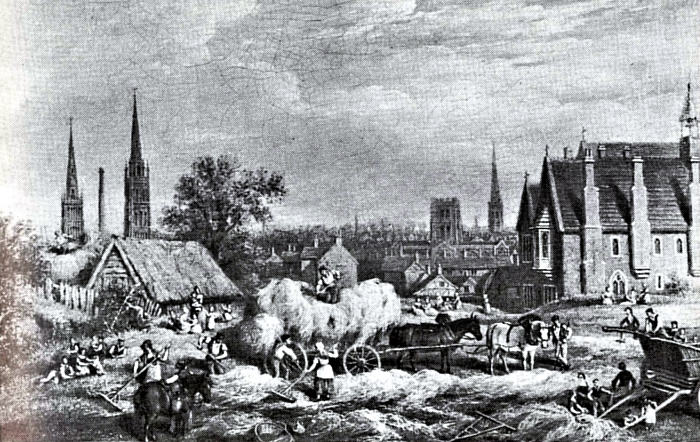
 he Catholic Church of St. Osburg's, situated on Upper Hill Street, Coventry, turned 176 years old back in June this year. It's gone through a number of subtle changes during that time, and survived (sort of) the Coventry Blitz and subsequent post-War redevelopments, notably, the Ring-Road. Here, I hope to provide you with a brief coverage of its history through images and photographs from the Coventry Archives Collection.
he Catholic Church of St. Osburg's, situated on Upper Hill Street, Coventry, turned 176 years old back in June this year. It's gone through a number of subtle changes during that time, and survived (sort of) the Coventry Blitz and subsequent post-War redevelopments, notably, the Ring-Road. Here, I hope to provide you with a brief coverage of its history through images and photographs from the Coventry Archives Collection.
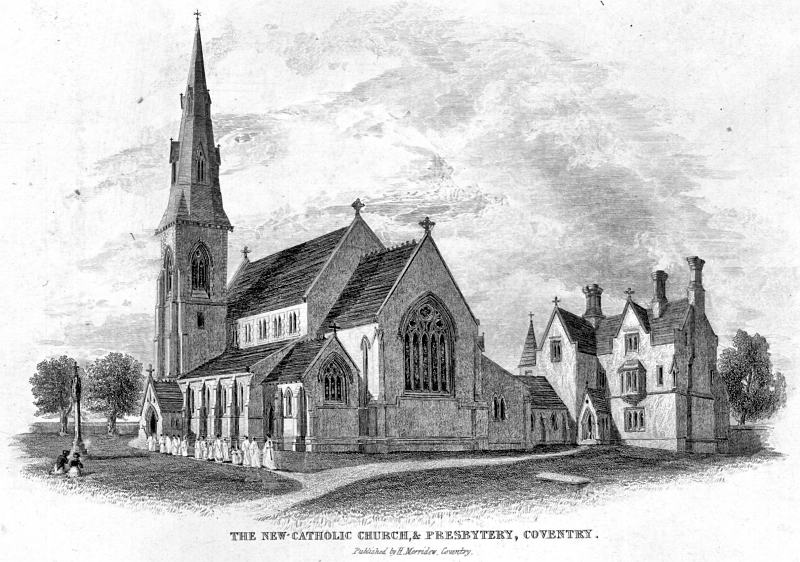
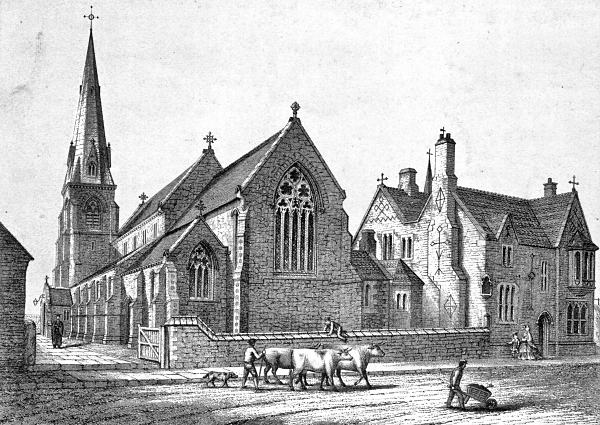
To set the scene then, on a no-doubt cold Wednesday evening of the 19th December 1849, one Mr. John Sibree Jnr., MA, delivered a lecture at the Mechanics Institute on Hertford Street, entitled 'Coventry, as it was, as it is, and as it may be'. In a packed room the talk lasted around an hour and a half, but significantly in this case, when Sibree was talking about the very early origins of Coventry, he stated "the first piece of clear history respecting Coventry, is the destruction of St. Osburg's Saxon Convent in 1016".
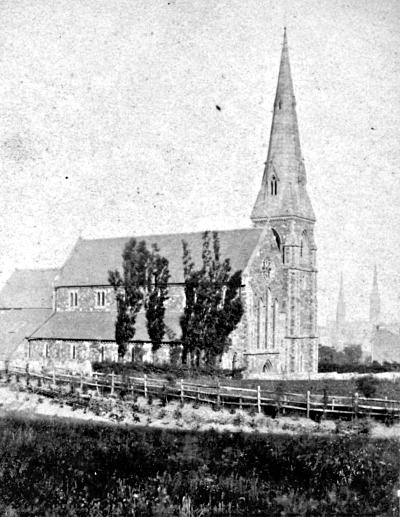
At that time, the location of the Convent was more central in relation to where St. Osburg's church is situated today, in fact it was positioned just North of Holy Trinity, exactly where Leofric and Godiva were to erect their Benedictine Monastery some 30 years later. On that basis, when it comes to the history of Coventry, the name of Saint Osburg is associated just about as far back as it goes - but what about the current site and buildings at Upper Hill Street and Barras Lane?
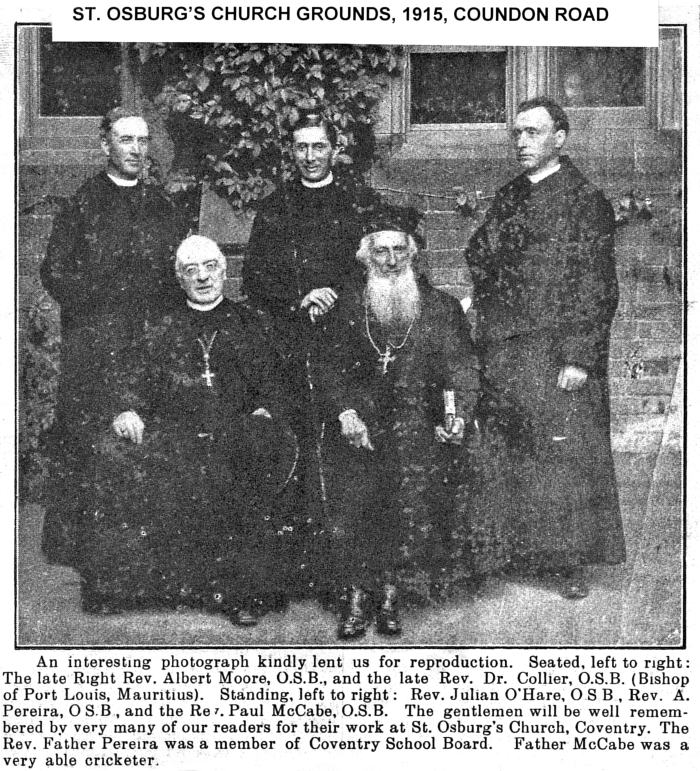
Dedicated in fact in honour of the 'Most Holy Sacrament and St. Osburg', the present church was begun in 1843 and completed two years later to a design provided by the City Surveyor Charles Hansom. Although the style is supposed to have been inspired by churches in Belgium and Germany, it is not so different from the Gothic Revival specimens being built all over England at the time for the Anglicans and has a spire which would not look out of place on the Northamptonshire Heights.
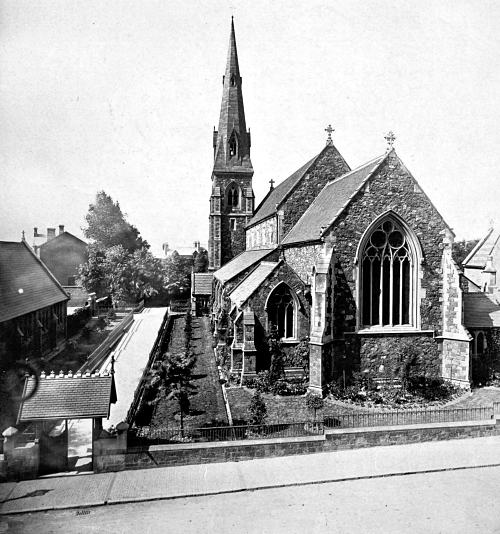
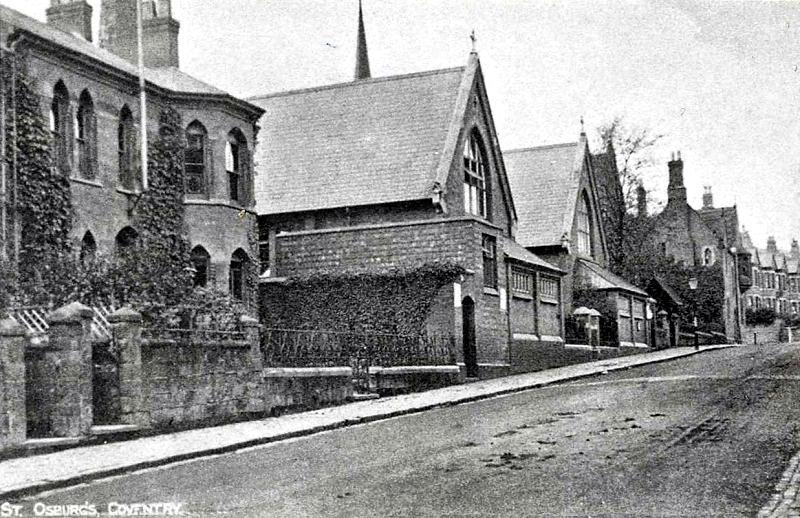
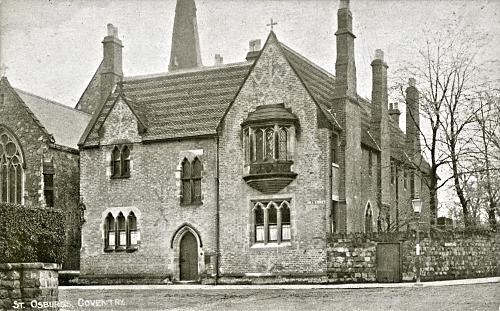
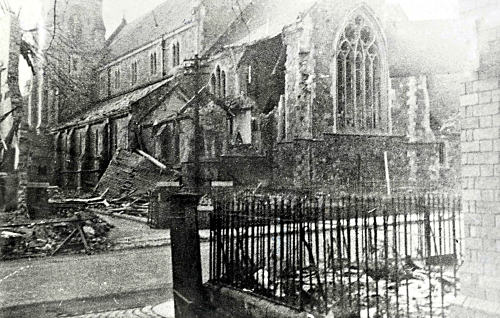
On the 29th of May 1943, the foundation stone was laid and drew quite a crowd. Joseph Jenkins and John Brewer, both of nearby Spon Street, attempted to obtain a superior view of the event by climbing to the summit of Stivichall Farmer Thomas Carter's rick of hay. Unfortunately for them, Carter deemed they had damaged the hay and they were both subsequently fined 3s each and 9d costs!
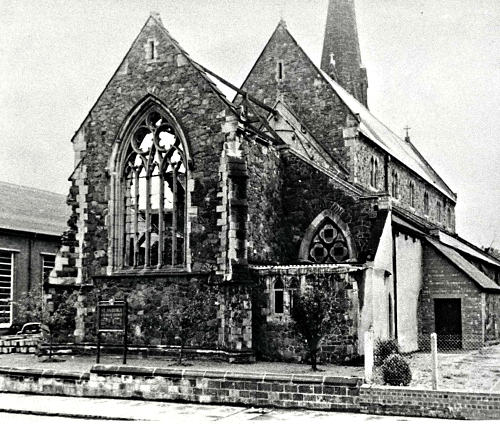
The Nave of the Church opened the following June, and the entire building was completed in late 1845. The building was very badly damaged during the 14th-15th November 1940 bombing, so much so that the church was not re-opened until April 1944, and not fully restored until 1952. The original St. Osburg Priory was completely destroyed in the Blitz, and rebuilt to a contemporary style in 1960 and still stands.
So, here's to the next 176 years - enjoy the images!
Damien Kimberley 2021.
Website by Rob Orland © 2002 to 2025